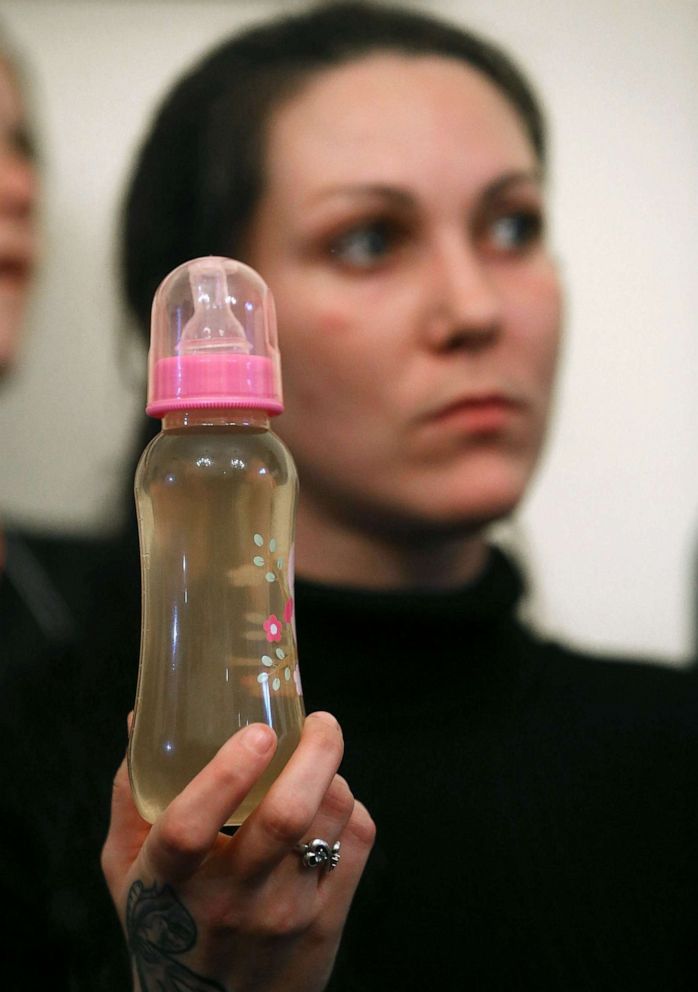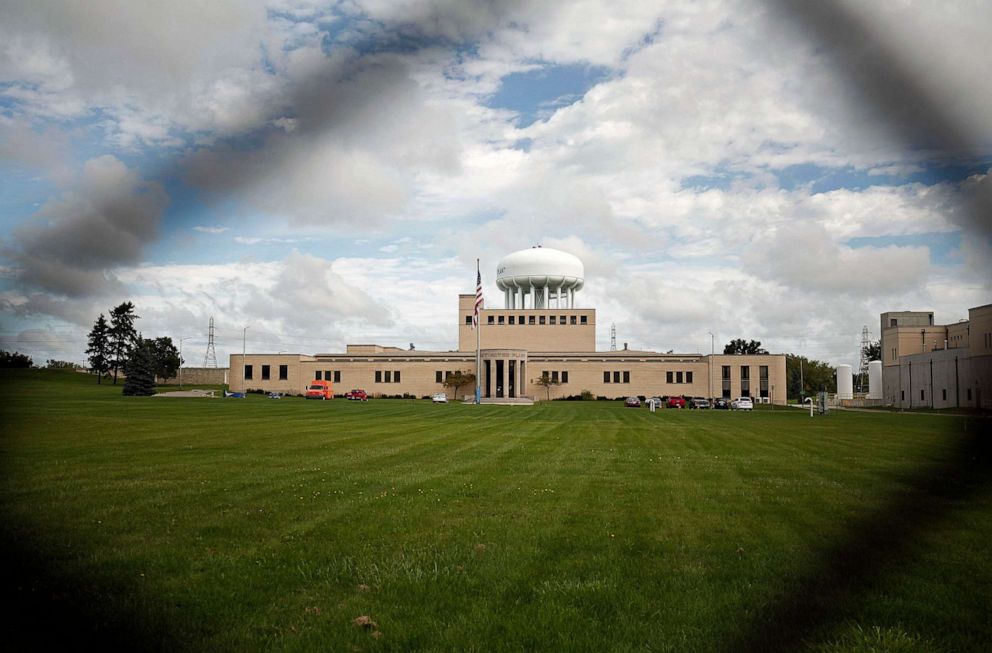EPA finalizes new lead and copper rules for drinking water
"Major capstone of the administration's goal to remove lead," said Wheeler.
The Environmental Protection Agency finalized rules Tuesday that would require water utilities to notify the public about possible lead contamination more quickly after detection and to replace lead service lines in what it says will be a more aggressive fashion -- the first regulatory update in nearly 30 years.
The updated lead and copper rule will require cities to replace 3% of lead service lines -- the lead pipes connecting city water lines to people's homes -- yearly, as opposed to the previous requirements of 7% to be replaced each year, and accelerates public disclosure about the location of lead service lines.
The new rule also mandates a shorter turnaround time for replacing contaminated pipes.
EPA Administrator Andrew Wheeler said the new rules will aid in better lead testing of water supplies, more lead pipe replacements and make more information on lead detection available to the public.

"While the old rule, theoretically, included a 7% replacement rate, it was riddled with loopholes and off-ramps ... we only saw 1% being replaced. With our new requirement of 3%, we'll see three times the replacement rate under the old rule," Wheeler said.
Wheeler acknowledged that a lack of action has been an ongoing problem, saying that more than 14,000 water systems had enough lead in the water to require them to act, but only 1% of those cities have begun replacing the lead service lines.

While the new rule does require faster notification to residents when lead is detected, critics pointed out it does not require cities to replace the pipes more quickly, saying the change does not do enough to protect disadvantaged communities impacted by lead exposure.
The new measures were announced the same week the Flint City Council came to a $641M settlement with its residents after the lead-driven Flint water crisis, which Wheeler has said inspired the administration to tackle the problem of lead exposure through corroded water pipes.
The Flint water crisis gained national attention in 2014 after changes to the city's water supply and failures to treat it properly exposed the city's population, to drinking water contaminated with lead.
In 2014, 51% of the city of Flint's population was African American, which made up most of the residents effected by lead exposure as a result of the water crisis. Residents protested the water’s taste, color, and smell often however, city officials declared the water was safe.

A government watchdog report found that both the federal and state government failed to act quickly enough to protect the residents in Flint from lead exposure, which is toxic and especially harmful to children. Several activists and residents called the crisis and its handling "environmental racism."
Wheeler referred to the new rule as a "major capstone of the administration's goal to remove lead."
Under the new rule, utility companies are now required to alert customers of high lead water concentrations within 24 hours of discovery -- a significant change from the previous 30-day requirement.
The new rules also mandates schools and child care centers be tested for lead, something not required under previous rules.

Secretary of Housing and Urban Development Ben Carson called that component of the rule "an incredibly important step toward guaranteeing safe resources for children all across the country."
Critics like former head of EPA's Office of Environmental Justice Mustafa Santiago Ali said the new rule does not go far enough to protect children from lead exposure.
"For the past two years, EPA Administrator Wheeler promised he would aggressively address lead exposure, a public health emergency that disproportionately impacts lower-wealth and African American, Latinx and Indigenous children. With the announcement of today's rule, Wheeler proved he was never serious about eliminating a threat that impacts millions of children throughout the country," Ali said in a statement.
In a statement to ABC News responding to concerns over the new rules, the EPA said, "the new Lead and Copper Rule will improve children’s health by accelerating progress to reduce lead levels and remove more sources of lead in communities across the country," It also said the rule will, "help communities locate and prioritize removal of lead pipes, the rule requires water systems to develop inventories of lead service lines and make their locations publicly available for the first time. It also requires more stringent sampling requirements to better identify high levels of lead and take action to address lead."

"EPA encourages systems to give specific consideration to prioritizing locations where susceptible populations are concentrated, such as child care facilities and where disadvantaged populations live because these populations may be more susceptible to the impacts of lead exposure, or may be more likely to live in environments with other lead exposure sources. EPA’s new rule strengthens every element of the Lead and Copper Rule to benefit children’s health regardless of zip-code," the statement also read.
According to the EPA, lead contamination in water can cause cardiovascular effects, increased blood pressure and incidence of hypertension. Decreased kidney function can create reproductive problems in both men and women.
According to the Center for Disease Control and Prevention any amount of lead is unsafe for children and a study found 11.2% of African American children and 4% of Hispanic children suffer from lead poisoning.




